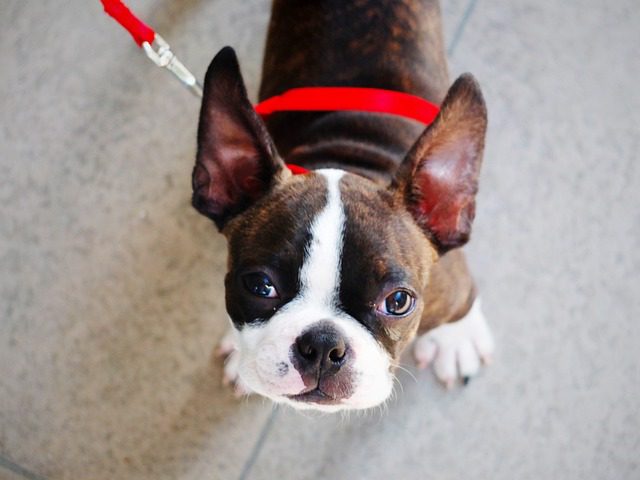What Causes Separation Anxiety In Dogs (13 Causes Explained)

As a dog owner have you ever asked yourself what causes separation anxiety in dogs, if this interests you then take a look at what we have to say.
There is no conclusive evidence showing exactly why many dogs develop separation anxiety. However, what is clear is that there are set of activities that trigger off separation anxiety.
This set of circumstances we will outline and discuss in this post has been heavily linked by most dog owners and experts.
You can see different signs of separation anxiety in dogs if you pay attention to your dog’s behavior changes over time.
What Causes Separation Anxiety In Dogs
One of the major causes of separation anxiety in dogs is when dogs are continuously been separated from their owners for a lengthy period of time, or even when dogs are left alone unattended for an extended period of time.
That being said, let’s look at all the possible circumstances that could lead to dogs developing separation anxiety.
Here are some common ways to help stop separation anxiety in dogs. You should check out after reading this post.
The following is a list of circumstances that have been linked to the onset of separation anxiety development in dogs:
1. Being left unattended for an extended period of time
Being left alone unattended for a long period of time is the major cause of separation anxiety in dogs, and dogs must be trained to stay alone.
In short, you shouldn’t get a dog if you intend to always be away from home, because dogs are one of the best human companions who strive for human companionship.
Dogs develop separation anxiety when they are left alone at home without any task or any form of mental stimulation.
Even though most dog breeds can stay longer than others before developing separation anxiety it is important to note that you should never leave your dog at home without any task for him to perform.
When you leave dogs alone at home, without proper crate training, they sleep to wake up and look for you if they can’t find you it becomes a problem.
2. Not being in contact with all family members
This is one common way dog owners force their dogs to get separation anxiety without knowing.
For example, you have a family of 3, the father, mother, and maybe the sister, then you get a dog, if only one of the family members cares for the dog this can lead to separation anxiety when the family member is not in.
In this circumstance, make sure you spread the love to all the family members in your house, during the workout let your family members find time to walk the dog.
During grooming, it should not be only for one person because the dog can be so attached to one person if the person only does what the dog wants.
The same thing goes for feeding, let everyone take part in feeding the dog not just one person because over time the dog can get used to that one person that feeds him.
If you let your dog get used to one person each time that one person tries to leave the dog will be anxious and start barking which is already separation anxiety.
So the question is, when the person the dog is attached to is not at home or goes on a vacation, what happens to the dog? I will leave you to answer that!
So my advice is that everyone in the family shares or finds time to be with the dog if you really want to avoid separation anxiety at any point.
3. Continuously changing daily routine
Separation anxiety can be triggered by a sudden shift in a dog’s schedule in terms of when or how long he or she is left alone.
If a dog’s guardian works from home and spends the entire day with his dog, but later takes a new job that forces him to leave his dog alone for six or more hours at a time, the dog may develop separation anxiety.
Changes in the meal schedule of dogs on a regular basis can also trigger off separation anxiety in dogs.
For example, you should be feeding your dog by 7 am every day, then because you don’t have your activities planned out you start feeding your dog when you are free, by 10 am some days and 8 am the other days.
Switching time or schedule on a regular basis is a sure or easy way of helping a dog develop separation anxiety without knowing.
4. The death of a dog beloved owner
Most dogs are so clingy and attached to one person that if the person is away for even one day at a time, they can easily develop separation anxiety.
When a caring dog owner passes away, the dog gets a new owner who the dog may never trust like the previous owner, this can become a problem if not fixed.
In some cases, this circumstance may lead to dog aggression and other bad behaviors which may end up sending the dog to a shelter home.
A real-life example of this is when you get inherited your friend or a family member’s dog after he or she passes away.
5. A change in location or city
Changing your environment or moving to a new place where your dog sees it as a strange environment can trigger off separation anxiety in dogs.
When moving to a new place or location, there are different ways you can get your dog ready to avoid unnecessary behaviors that come with changing environment.
For example, if you plan to move you must condition your dog to proper crate training sessions and more.
Changing location can trigger off separation anxiety because your dog may lose trust and confidence in you due to the condition of the new environment.
6. Inability to hear or poor vision in dogs
We all know that dogs love human interaction, some dogs can even follow their owners from one room to another.
When a dog develops hearing issues or poor sight, there is this feeling of not being able to interact with their owners because of their health.
Separation anxiety in dogs can be triggered off if your dog can not hear your voice or even see what is going on around him.
These health challenges make the dog feel left alone even when you are around.
7. Insufficient mental stimulation over time
There’s no doubt that lack of mental stimulation activities or exercise over time in dogs can lead to dog aggression or even obesity.
When you fail to provide your dog with something to do that with keep him mentally stimulated he feels left alone and can easily develop separation anxiety
This mainly happens to dogs whose owners are constantly on the move or people who have 9 to 5 jobs.
If you provide your dog with lots of mental stimulation activities, he will never be bored or lonely, which is a perfect recipe for separation anxiety.
Always remember that if dogs are left alone without any task or form of exercise, they build up lots of energy which can become trouble for their owners.
8. Being abandoned by owners
We all know that taking care of a dog is sometimes not a funny business, especially when you view it from a financial angle.
Keeping up with what a dog needs, both feeding, grooming, vet visit, a daily walk is not funny, which is why you shouldn’t get a dog if you are not ready to roll with what is involved.
This is why people abandon their dogs to the street because they can’t keep up, or they can’t move to their new city with their dog
Abandoning a dog is a perfect recipe for separation anxiety, especially if the dog has nowhere to go or whom to be with.
So if you can no longer be with your dog talk to your friends, family members or talk him to the shelter instead of just abandoning him.
You are indirectly creating separation anxiety problems for the next person to adopt the dog.
9. Traumatic experiences
This is common in dogs found in the shelter home or dogs that have gone through a transfer of ownership.
Being abandoned, surrendered to a shelter, or given to a new guardian or family can trigger the development of separation anxiety, all come with a form of a traumatic experience for dogs.
When you get a dog from a shelter or from friends and family members, the dog takes time to trust you, even though you can facilitate the process with certain activities or actions.
Such dogs come with a high level of separation anxiety due to their experiences, it will take you time to fix the dog or even take him to an expert.
Passed abuse by the owner can also make a dog develop separation anxiety and the dog may carry the anxiety over to your home.
10. Improper crate training or confinement training
Improper crate training can force a dog to feel left alone or caged since the dog is not happy or relaxed in his crate or confinement.
When a dog has separation anxiety and is not properly trained to remain in a crate, you can see the dog forcing his way out of the crate and this can lead to injuries.
If you must place a dog in his crate or a confinement before stepping out make sure the dog has all he needs and that you have tried it serially.
Dogs feel left alone or trapped, which triggers off separation anxiety when they have poor crate training, here is what experts say about dog crate training.
To avoid unnecessary behaviors due to poor crate training, which leads to separation anxiety, you must make the crate very comfortable or a safe zone for your dog.
11. Making a big deal out of departure or arrival
You think your dog can’t read your energy and emotions, then you are wrong, think again.
Don’t make it a big deal when you leave or return home, as this causes your dog to be anxious and can easily trigger off separation anxiety.
Keep things simple as usual when you leave or return, stop big kisses and hugs when you leave or return, they cause anxiousness in dogs.
Go about your daily routine when you return home or when you want to leave.
12. Poor introduction of new pets or family members
This circumstance may sound funny to you, but it is very real, and it occurs in many homes.
Dogs don’t easily trust people or other pets, which leads to dog aggression or dogs barking at other dogs.
Most dogs are jealous and can become anxious when you bring in new pets or people which they can’t trust from the onset.
To avoid unnecessary stress, depression, or separation anxiety, you must properly introduce any new family member be it a pet or a human.
If a dog doesn’t like a pet or a new family member, the may be involved in self-isolation, which triggers off separation anxiety.
13. Continues transfer of ownership
This circumstance is another reason for separation anxiety, and it is self-explanatory.
If a dog keeps changing owners every 6 months, for example, this is a perfect recipe for separation anxiety and other bad behaviors.
I strongly hope your question What Causes Separation Anxiety In Dogs was answered with the information provided on this page.






